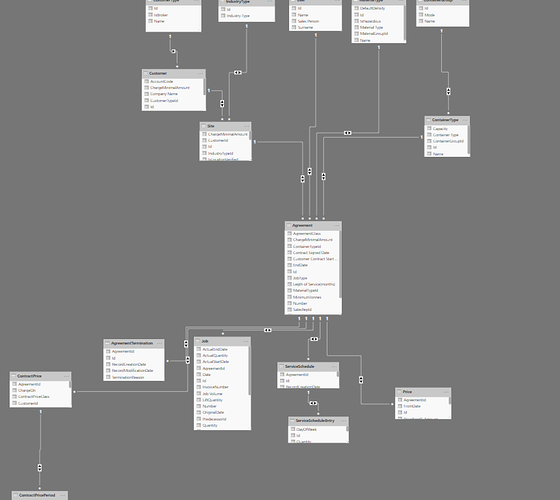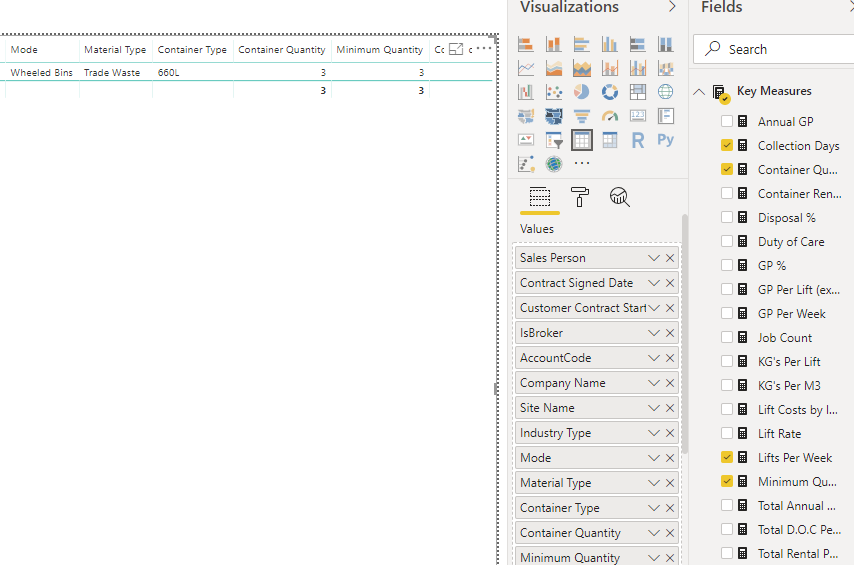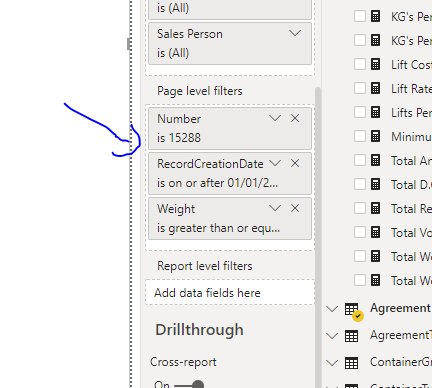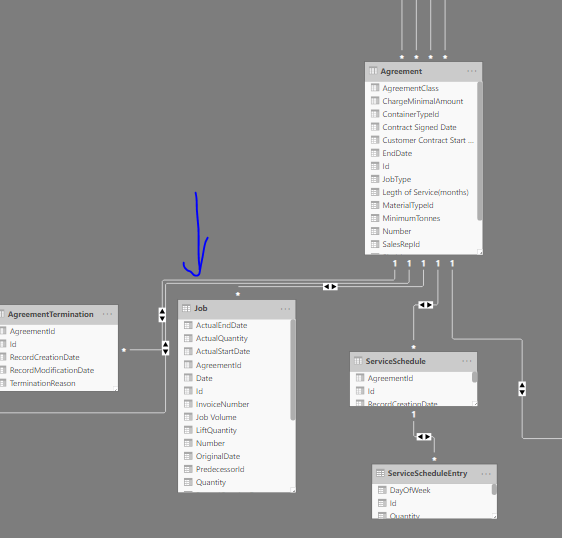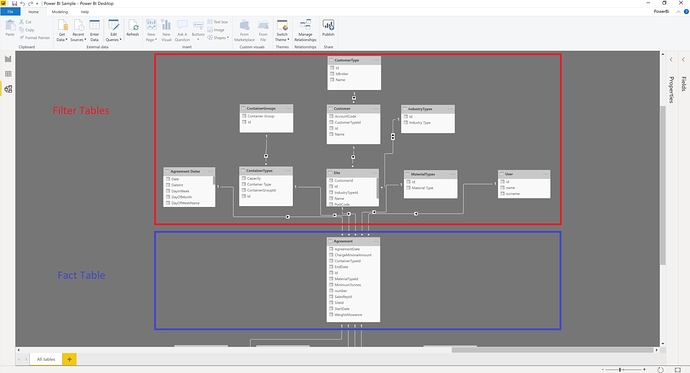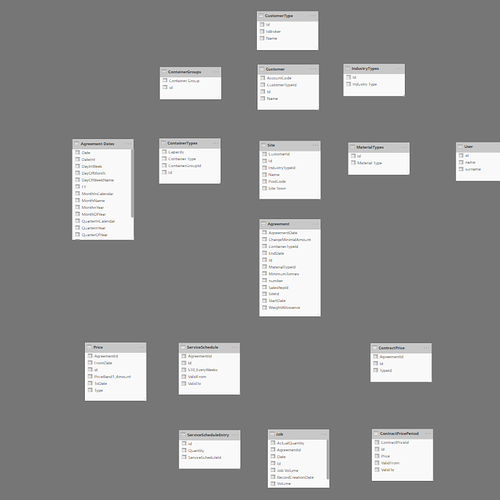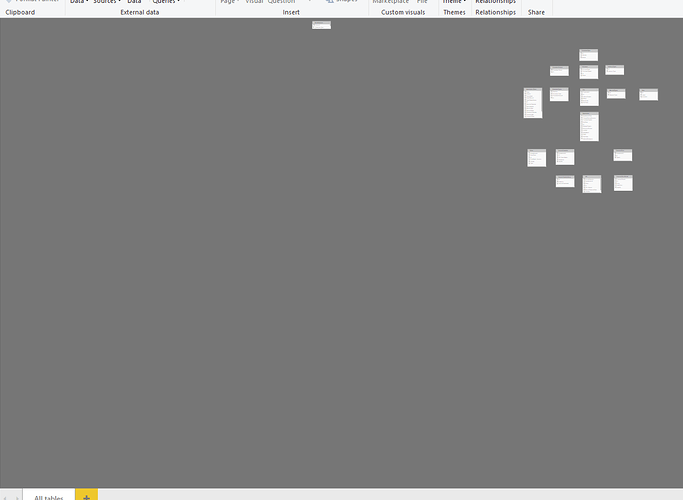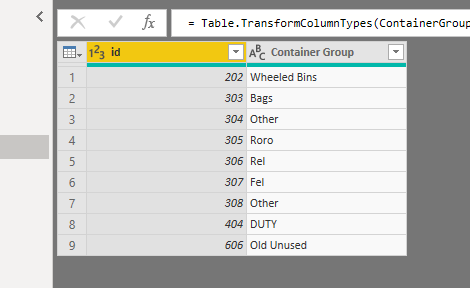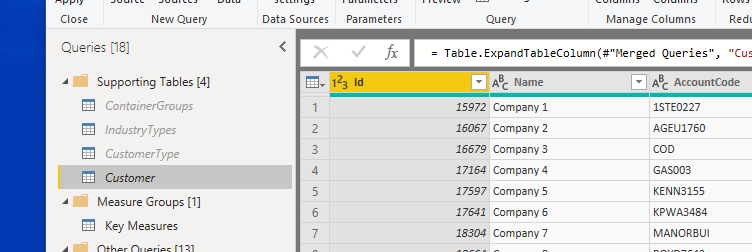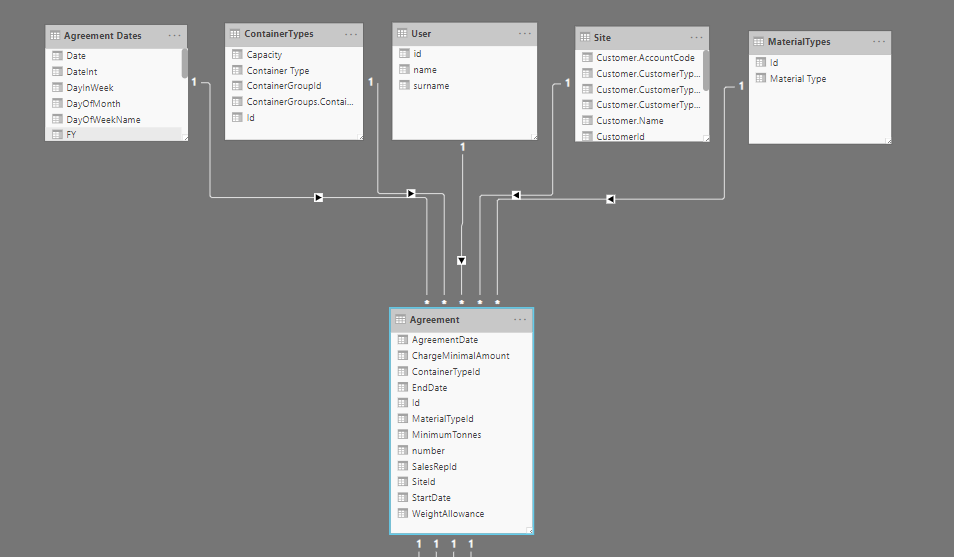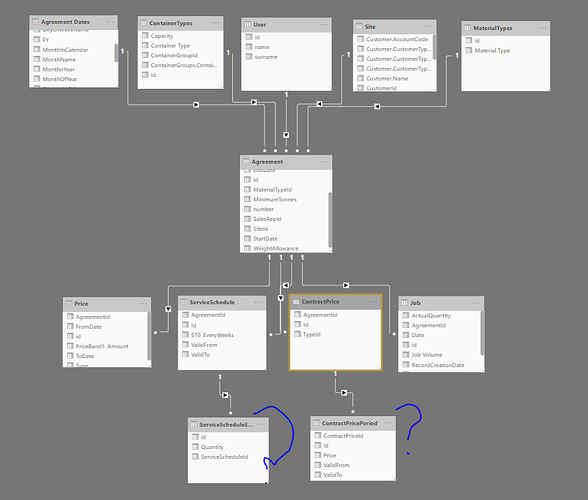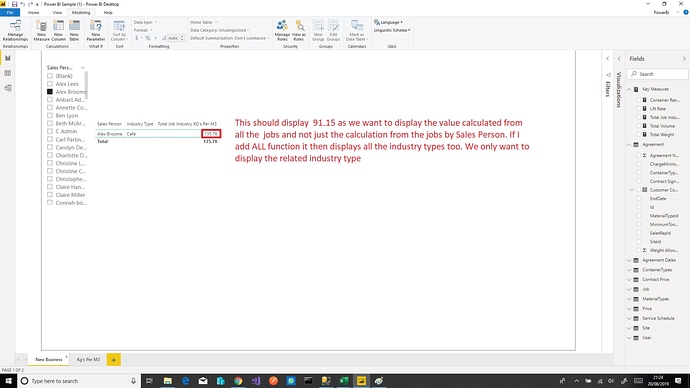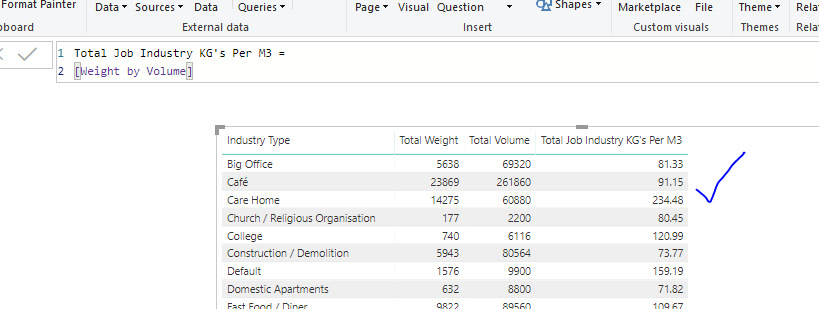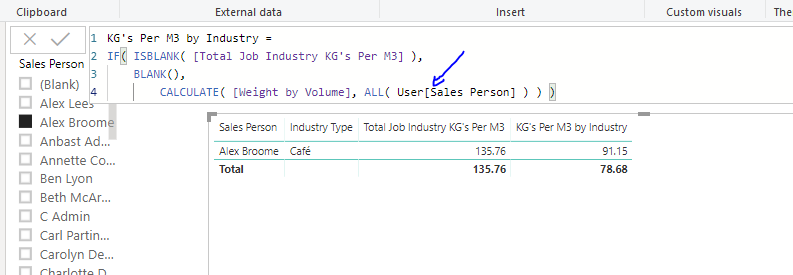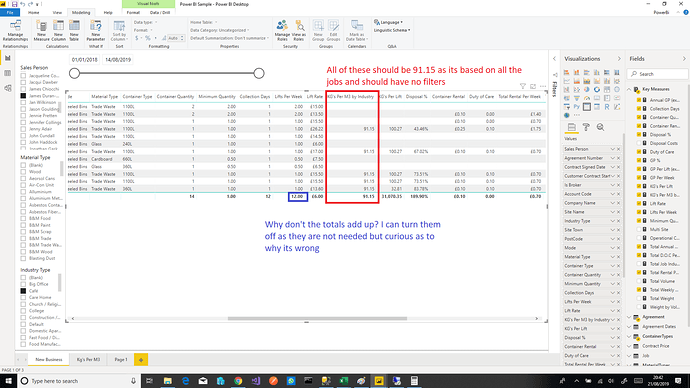Hi,
Please can you take a look at my report, I would like all 3 report tabs as 1 report but there is something wrong with the relationships as I’m getting multiple lines for 1 record.
The Container Type seems to be like a full join, all of the container types are being displayed causing the 1 record to have multiple lines. If you add Container Type to the part 2 report you can see what happens.
The Tab “kg/m3 by industry Type” calculates the average weight in kg per industry type from all the jobs since 1/1/2019, when I add this to the table it also multiplies all the rows, I need a way to get this measure to only display the kg’s/m3 with regards to the industry type as per the record in the site.industrytypeid field. I think it a problem with the context, I’ve removed all the filters but I’m stuck how to resolve the problem. If you try to add all the fields from ‘New Customer or Site Part 2’ to the first tab ‘New Customer or Site’ you will see my issue.
Many Thanks Nathan
